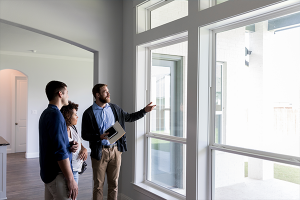References
NAR Library & Archives has already done the research for you. References (formerly Field Guides) offer links to articles, eBooks, websites, statistics, and more to provide a comprehensive overview of perspectives. EBSCO articles (E) are available only to NAR members and require a password.
Green Remodeling Options
- Low-flow shower head and faucets
- Low-flush or dual-flush toilets
- Compact fluorescent or Halogen bulbs
- Tankless or solar water heater
- Energy-Star appliances
- Low-VOC paints and wood finishes
- Lighting controls
- Reflective or light-colored roofing
- Bio-based insulation
- Double-paned or Low-E windows
- Solar or Photovoltaic panels
Green Remodeling (eBook)
Greening of the Housing Market
Green Buildings in the U.S. - Statistics & Facts (Statistica, Mar. 24, 2022))
“As the demand for more sustainable building options increases, green construction has become increasingly profitable and desirable within the global construction market. The green building market is anticipated to be among the fastest growing industries worldwide. The number of LEED-certified projects in the United States rose from 296 certifications in 2006 up to over 67,200 in 2018.”
About Green Homes (U.S. Green Building Council, 2022)
“LEED homes are designed and constructed to provide a safe, healthy and sustainable place to live. They provide cleaner indoor air, save on energy and water, maintain their value over time, and prioritize the use of materials that promote health and enhance resilience. LEED homes deliver at least 15% in energy savings compared to homes built to code and 20% in water savings.”
Benefits of Green Building (U.S. Green Building Council, 2022)
- Green buildings reduce day-to-day costs year-over-year. LEED buildings have reported almost 20 percent lower maintenance costs than typical commercial buildings, and green building retrofits typically decrease operation costs by almost 10 percent in just one year.
- Green buildings are for every market and every community. A report on the Los Angeles market indicated that while traditional (non-LEED certified) buildings receive an average of $2.16/ft2, tenants were willing to pay $2.91/ft2 for LEED certified space.
- The University of Texas at Austin looked at resale value on homes in the Austin-Round Rock Metropolitan Statistical Area and found that homes built to LEED standards between 2008-2016 showed an eight percent boost in value, while homes built to a wider range of green standards saw a 6 percent increase in value.
The Capitalization of Energy Efficiency: Evidence from the Housing Market (Journal of Urban Economics, May 2020)
“As the level of energy efficiency increases by ten percent, the market value of the dwelling increases by around 2.2 percent – quite a precise reflection of both the required capital outlay and future energy savings. “
Green Living
Greener Living (Environmental Protection Agency, Apr. 5, 2022)
EPA has tools to help you learn and understand the issues and help you reduce your environmental footprint.
Carbon Footprint Calculators (Greener Choices, 2022)
The average carbon footprint for a person in the United States is 16 tons, one of the highest rates in the world. Globally, the average carbon footprint is closer to 4 tons. To have the best chance of avoiding a 2℃ rise in global temperatures, the average global carbon footprint per year needs to drop to under 2 tons by 2050.
Best Countries for Green Living (U.S. News, 2021)
The 2021 Best Countries for Green Living ranking draws from the results of a global perceptions-based survey, and countries are ranked based on a compilation of three country attributes: caring about the environment, being health conscious and being innovative.
Living Green (University of Florida, 2021)
Living Green focuses on how communities incorporate environmental concerns into their homes, neighborhoods, and businesses to help conserve natural resources and wildlife for future generations.
Sustainable Living Guide (Johns Hopkins University, Jan. 2021)
The Sustainable Living Guide is a collection of resources and recommendations intended to assist Johns Hopkins University community members to live more environmentally conscious lifestyles. The guide covers many areas that impact an individual’s environmental footprint, such as cleaning, energy and water consumption, waste practices, and food and dietary choices.
Impact Values
How are energy efficient improvements considered in the appraisal report? (Fannie Mae, Apr. 6, 2022)
Appraisers must compare energy-efficient features of the subject property to those of comparable properties in the Sales Comparison Approach adjustment grid. Appraisers may augment the Sales Comparison Approach in evaluating any impact (either positive or negative) to the value of energy efficiency improvements with either the income or cost approach; however, appraisers cannot adjust the value of the property:
- on a mechanical dollar-for-dollar basis based on equipment and installation cost, or the discounted present value of expected cost savings of the equipment over the useful life of the equipment; or
- solely based on the cost or income approach. The appraiser must also analyze the market reaction to the energy efficient feature.
Estimation of Change in House Sales Prices in The United States After Heat Pump Adoption (Nature Energy, Oct. 19, 2020)
Heat pumps offer a feasible and energy-efficient way to electrify space heating. Here, we show a positive house price premium associated with air source heat pump installations across 23 states in the United States. Residences with an air source heat pump enjoy a 4.3–7.1% (or US$10,400–17,000) price premium on average.
Do Green Improvements Increase Resale Value? (My Home by Freddie Mac, Aug. 25, 2020)
The chief motivation for these sustainable features is the potential savings they offer in annual utility costs. According to the U.S. Department of Energy, the typical family spends at least $2,200 per year on energy bills—but energy efficient upgrades could reduce that cost by up to 30%.
Buying an Energy-Efficient Home: A Financially Bright Idea (Nerdwallet, May 1, 2019)
If you buy a certified efficient house, it could give you an advantage should you ever sell. Energy-efficient homes bring in around $5,000 more than standard homes, a 2019 National Association of Home Builders study concluded.
Resources, Studies, Websites
REALTORS® & Sustainability Report (National Association of REALTORS®, Mar. 2022)
In March 2022, NAR surveyed its members pertaining to sustainability issues facing the industry. The findings are as follows:
- Thirty-five percent of respondents reported their MLS has green data fields, and respondents typically used the green data fields to promote green features and energy information.
- Sixty-three percent said energy efficiency promotion in listings was very or somewhat valuable.
- Fifty-one percent of respondents found clients were at least somewhat interested in sustainability.
- Forty-five percent of homes with green certifications spent neither more nor less time on the market.
Articles, product guides, building science, energy-smart details, and construction-detail drawing library.
Federal Tax Credits for Energy Efficiency (Energy Star)
**Please note: The current tax credits for Residential Energy Efficiency (Equipment Tax Credits for Primary Residences) as well as the tax credit for builders of energy efficient homes expired on December 31, 2021. As of January 5, 2022, there is no approved extension of these tax credits. Any extension/renewal of these credits is still pending approved legislation by Congress. We will update our website with updates when there is an approved bill. The tax credits for Residential Renewable Energy Products are still effective, as written on this site, through December 31, 2023.
NAR’s Green Designation (Green Resource Council)
Buyers increasingly search for homes that have increased energy performance and provide a healthier, more comfortable living space. Builders of green homes depend on educated real estate professionals to help market newly constructed or remodeled homes.
By earning NAR's Green Designation, you position yourself as a leader in green real estate that's fully equipped to help clients take advantage of the opportunities their next home can offer.
eBooks & Other Resources
eBooks.realtor.org
The following eBooks and digital audiobooks are available to NAR members:
An Introduction to Green Homes (eBook)
The Art of Living in Your Green Zone (eBook)
Be a Successful Green Builder (eBook)
Building Today's Green Home (eBook)
Choosing Green (eBook)
The Complete Idiot's Guide to Green Building & Remodeling (eBook)
The Complete Idiot's Guide to Green Living (eBook)
Getting Green Done (eBook)
Go Green, Live Rich (eBook)
The Green Book (eBook)
Green Building A to Z (eBook)
The Green Building Bottom Line (eBook)
Green Building Products (eBook)
Green Building Through Integrated Design (eBook)
Green Business Practices for Dummies (eBook)
Green Cities (eBook)
Green Guide (eBook)
Greening Your Home (eBook)
Green Remodeling (eBook)
Green Restorations (eBook)
Green Up! (eBook)
Green Zone Living: 7 Steps to a Happy, Healthy and Peaceful Lifestyle (eBook)
New Green Home Solutions (eBook)
Prefabulous World (eBook)
Sustainable Design (eBook)
Sustainable Living (eBook)
Sustainable Residential Development (eBook)
Your Eco-Friendly Home (eBook)
Your Green Home (eBook)
Books, Videos, Research Reports & More
As a member benefit, the following resources and more are available for loan through the NAR Library. Items will be mailed directly to you or made available for pickup at the REALTOR® Building in Chicago.
The Sustainable Home: The Essential Guide to Eco Building, Renovation and Decoration (London: Merrell Publishers Limited, 2008) TD 171.7 St8
Green Buildings Pay (Washington, D.C.: Spon Press, 2003) NA 2542 G72
Green Building Guidelines (Washington, D.C.: Sustainable Buildings Industry Council, 2003) HD 255 Su8
Green Your Home: Healthy, Money-smart, and Sustainable Living Begins at Home (Keller Ink, 2011) TD 171.7 K28
Have an idea for a real estate topic? Send us your suggestions.
The inclusion of links on this page does not imply endorsement by the National Association of REALTORS®. NAR makes no representations about whether the content of any external sites which may be linked in this page complies with state or federal laws or regulations or with applicable NAR policies. These links are provided for your convenience only and you rely on them at your own risk.











